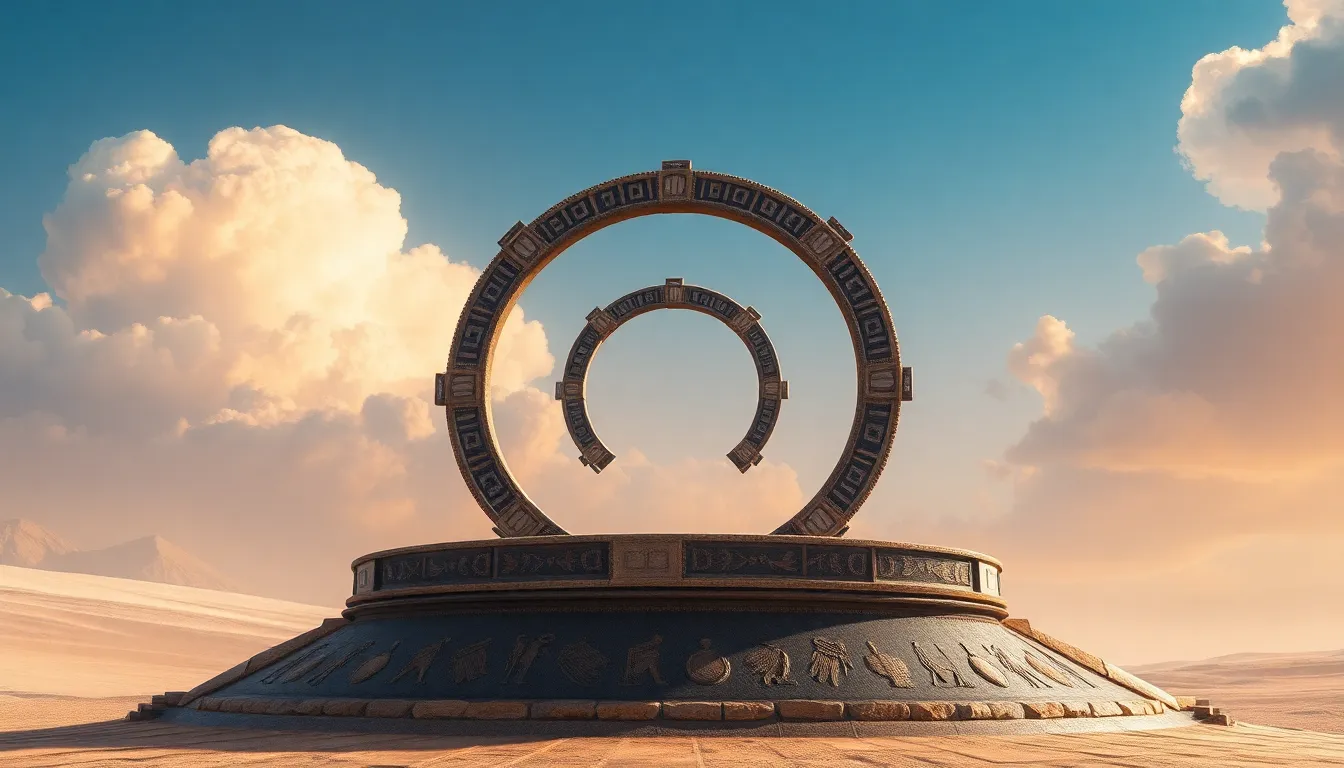The Myth of the Sacred Circle: Unity and Wholeness in Egyptian Lore
I. Introduction
The concept of the sacred circle resonates deeply across various cultures, symbolizing unity, wholeness, and the cyclical nature of life. In ancient Egyptian lore, this symbolism is particularly pronounced, reflecting the civilization’s profound understanding of balance and cosmic order.
This article explores the significance of the sacred circle in Egyptian mythology, examining how this motif embodies unity and wholeness and its implications for understanding ancient beliefs and practices.
II. Historical Context of Egyptian Mythology
Ancient Egyptian civilization, one of the earliest and most influential cultures in human history, thrived along the fertile banks of the Nile River. This civilization was characterized by its rich mythology, elaborate religious practices, and profound philosophical insights into existence.
Key beliefs surrounding unity and wholeness were integral to the Egyptian worldview. The concept of Ma’at, representing truth, balance, and cosmic order, was central to their understanding of the universe. Mythology played a crucial role in Egyptian society, serving as a means to explain natural phenomena, human existence, and the relationship between the divine and the mundane.
III. The Sacred Circle: Definition and Symbolism
The sacred circle can be defined as a symbol of wholeness and unity, often representing the infinite nature of the cosmos. In religious contexts, it signifies the connection between the earthly and the divine, illustrating the belief that everything is interconnected.
In ancient Egyptian art and architecture, the circle is a prevalent motif, symbolizing eternity, the sun, and the cyclical nature of life. For instance, the sun god Ra is often depicted within circular symbols, representing the sun’s daily journey across the sky.
The circle is also a representation of the divine, embodying the idea that all things originate from a singular source and return to it, emphasizing the unity of existence.
IV. Gods and Goddesses of Unity and Wholeness
Several deities in Egyptian mythology embody the concepts of unity and wholeness:
- Atum: Considered the first god and creator, Atum represents the unity of all creation. He is often depicted as a complete circle, symbolizing the totality of existence.
- Ma’at: The goddess of truth and harmony, Ma’at embodies the principle of cosmic order. Her presence ensures the balance necessary for the universe to function cohesively.
Myths such as the creation story of Atum highlight the concept of oneness, illustrating how he created the world from himself through a process of self-reproduction. The role of deities like Atum and Ma’at in maintaining cosmic order reflects the importance of unity in Egyptian thought.
V. The Role of Rituals and Ceremonies
Rituals and ceremonies played a vital role in reinforcing the ideas of unity and community in ancient Egypt. These practices were designed to invoke the sacred circle, bringing people together in shared worship and celebration.
Specific ceremonies, such as the Opening of the Mouth ritual, were intended to restore life and unity to the deceased, ensuring their successful journey to the afterlife. Such rituals fostered social cohesion and a collective identity among the participants, emphasizing the interconnectedness of the community.
VI. The Sacred Circle in Egyptian Art and Architecture
Circular motifs are prevalent in Egyptian art, symbolizing unity and eternity. Amulets, sculptures, and tomb paintings often feature circular designs, reflecting the belief in the cyclical nature of life and death.
Architecturally, circular designs can be seen in temples and monuments such as the circular platform of the Temple of Karnak. These structures were not just functional; they were imbued with symbolic significance, representing the infinite nature of the divine and the unity of the cosmos.
Through these artistic expressions, the ancient Egyptians communicated their deep understanding of unity, creating a visual language that transcended time.
VII. Modern Interpretations and Misconceptions
The concept of the sacred circle has evolved over time, influencing various spiritual practices in contemporary society. However, common misconceptions about unity in Egyptian lore persist, often oversimplifying the complexity of these ancient beliefs.
Modern interpretations sometimes detach the sacred circle from its original context, leading to a misunderstanding of its significance in Egyptian spirituality. Despite this, the essence of these myths continues to resonate, reminding us of the importance of unity and wholeness in our lives.
VIII. Conclusion
In summary, the myth of the sacred circle in Egyptian lore serves as a profound symbol of unity and wholeness, rooted deeply in the historical and cultural context of ancient Egypt. Through the exploration of deities, rituals, and artistic expressions, we gain insight into the Egyptians’ understanding of the cosmos and their place within it.
The enduring significance of these themes reflects the timeless human quest for connection and meaning, emphasizing that the lessons of unity and wholeness are just as relevant today as they were in ancient times.
Ultimately, the myth of the sacred circle invites us to contemplate our own interconnectedness and the divine unity that underlies all existence.




